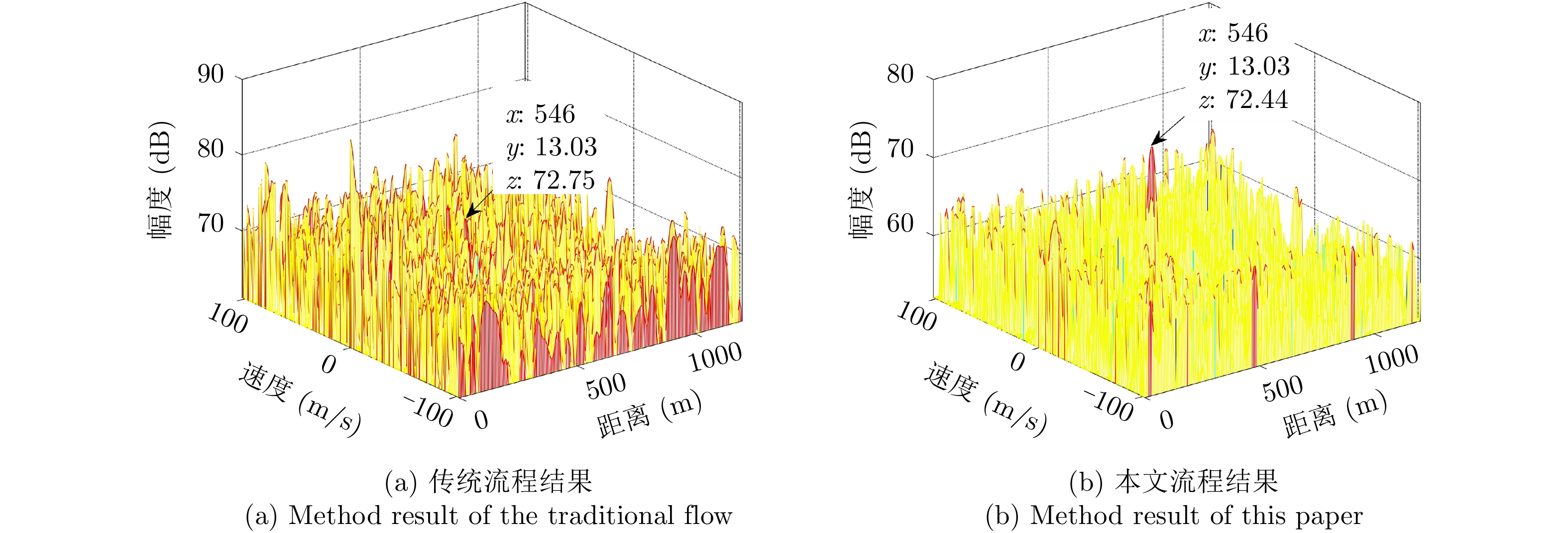| [1] |
HOWLAND P. Editorial: Passive radar systems[J]. IEE Proceedings-Radar, Sonar and Navigation, 2005, 152(3): 105–106. doi: 10.1049/ip-rsn:20059064 |
| [2] |
KRYSIK P, SAMCZYNSKI P, MALANOWSKI M, et al. Detection of fast maneuvering air targets using GSM based passive radar[C]. The 2012 13th International Radar Symposium, Warsaw, Poland, 2012: 69–72. doi: 10.1109/IRS.2012.6233291. |
| [3] |
WANG Haitao, WANG Jun, and LI Hongwei. Target detection using CDMA based passive bistatic radar[J]. Journal of Systems Engineering and Electronics, 2012, 23(6): 858–865. doi: 10.1109/JSEE.2012.00105 |
| [4] |
王本静, 易建新, 万显荣, 等. LTE外辐射源雷达帧间模糊带分析与抑制[J]. 雷达学报, 2018, 7(4): 514–522. doi: 10.12000/JR18025WANG Benjing, YI Jianxin, WAN Xianrong, et al. Inter-frame ambiguity analysis and suppression of LTE signal for passive radar[J]. Journal of Radars, 2018, 7(4): 514–522. doi: 10.12000/JR18025 |
| [5] |
WAN Xianrong. An overview on development of passive radar based on the low frequency band digital broadcasting and TV signals[J]. Journal of Radars, 2012, 1(2): 109–123. doi: 10.3724/SP.J.1300.2012.20027 |
| [6] |
饶云华, 明燕珍, 林静, 等. WiFi外辐射源雷达参考信号重构及其对探测性能影响研究[J]. 雷达学报, 2016, 5(3): 284–292. doi: 10.12000/JR15108RAO Yunhua, MING Yanzhen, LIN Jing, et al. Reference signal reconstruction and its impact on detection performance of WiFi-based passive radar[J]. Journal of Radars, 2016, 5(3): 284–292. doi: 10.12000/JR15108 |
| [7] |
OCHIAI H. High-order moments and gaussianity of single-carrier and OFDM signals[J]. IEEE Transactions on Communications, 2015, 63(12): 4964–4976. doi: 10.1109/TCOMM.2015.2485991 |
| [8] |
|
| [9] |
赵永科, 吕晓德. 一种联合优化的无源雷达实时目标检测算法[J]. 雷达学报, 2014, 3(6): 666–674. doi: 10.12000/JR14005ZHAO Yongke and LÜ Xiaode. A joint-optimized real-time target detection algorithm for passive radar[J]. Journal of Radars, 2014, 3(6): 666–674. doi: 10.12000/JR14005 |
| [10] |
FU Yan, WAN Xianrong, ZHANG Xun, et al. Parallel processing algorithm for multipath clutter cancellation in passive radar[J]. IET Radar, Sonar & Navigation, 2018, 12(1): 121–129. doi: 10.1049/iet-rsn.2017.0106 |
| [11] |
YI Jianxin, WAN Xianrong, LI Deshi, et al. Robust clutter rejection in passive radar via generalized subband cancellation[J]. IEEE Transactions on Aerospace and Electronic Systems, 2018, 54(4): 1931–1946. doi: 10.1109/TAES.2018.2805228 |
| [12] |
LU Min, YI Jianxin, WAN Xianrong, et al. Co-channel interference in DTMB-based passive radar[J]. IEEE Transactions on Aerospace and Electronic Systems, 2018: 1. doi: 10.1109/TAES.2018.2882959 |
| [13] |
LI Jichuan, ZHAO Yaodong, ZHAO Yongke, et al. Direct path wave purification for passive radar with normalized least mean square algorithm[C]. 2013 IEEE International Conference on Signal Processing, Communication and Computing, Kunming, China, 2013: 1–4. doi: 10.1109/icspcc.2013.6663987. |
| [14] |
BERTHILLOT C, SANTORI A, RABASTE O, et al. BEM reference signal estimation for an airborne passive radar antenna array[J]. IEEE Transactions on Aerospace and Electronic Systems, 2017, 53(6): 2833–2845. doi: 10.1109/TAES.2017.2716458 |
| [15] |
BOURNAKA G, BARUZZI A, HECKENBACH J, et al. Experimental validation of beamforming techniques for localization of moving target in passive radar[C]. The 2015 IEEE Radar Conference, Arlington, USA, 2015: 1710–1713. doi: 10.1109/RADAR.2015.7131274. |
| [16] |
WANG Feng, WEI Shuang, and JIANG Defu. Co-frequency interference suppression for aerostat passive bistatic radar[J]. Chinese Journal of Electronics, 2018, 27(3): 658–666. doi: 10.1049/cje.2017.08.017 |
| [17] |
KOHNO K, KAWAMOTO M, and INOUYE Y. A matrix pseudoinversion lemma and its application to block-based adaptive blind deconvolution for MIMO systems[J]. IEEE Transactions on Circuits and Systems I: Regular Papers, 2010, 57(7): 1449–1462. doi: 10.1109/tcsi.2010.2050222 |
| [18] |
HAYKIN S S. Adaptive Filter Theory[M]. India: Pearson Education India, 2005: 1–15.
|
| [19] |
|
| [20] |
MATSUOKA K, OHBA Y, TOYOTA Y, et al. Blind separation for convolutive mixture of many voices[C]. The International Workshop on Acoustic Echo and Noise Control, Kyoto, Japan, 2003: 279–282.
|




 Submit Manuscript
Submit Manuscript Peer Review
Peer Review Editor Work
Editor Work





 DownLoad:
DownLoad:






